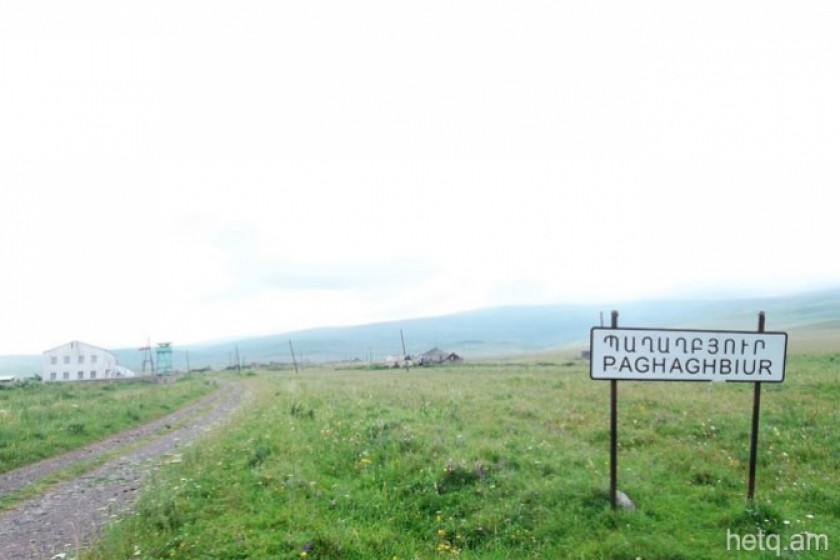
Paghaghbyur: An Armenian Village Slowly Fading on the Georgian Border
Gayane Sargsyan
Finding Paghaghbyur, a tiny village in Armenia’s Lori Province straddling the border with Georgia, really challenged our taxi driver.
There’s no permanent telephone service between Paghaghbyur and the neighboring village of Metzavan – just an expanse of open fields.
After an hour travelling through the fields, I spotted a few houses with tiled rooves – Paghaghbyur. The name means “cold spring” in Armenia.
The village used to be Azeri-populated before the Artsakh War. It was then called Soyouaghboular. Many Armenians from Armenia, Georgia and Azerbaijan were attracted by the houses they left behind.
Heriknaz Melkonyan’s family arrived in 1991 from Yerevan.
“My brother visited and said that there were houses for the taking. There were five of us sisters-in-law. We said we would buy some animals to raise,” Heriknaz says, adding that she really liked the village.
Conditions, though, have gotten worse over the years. There’s no longer any road linking the village to the outside world. It’s like living in no man’s land during the winter.
There’s only one or two cars in the village. Vardan Vardanyan, who owns one of them, says he tries to help his neighbors who need to get out to the nearest hospital in an emergency.
“It was just a few days ago that I got a call in the middle of the night. A woman was about to give birth. I got in my jalopy and got the woman to the maternity ward,” Vardan says.
Sometimes, village women give birth at home.
“It happened to me,” says Rouzan Kloyan. “There were no cars to take me to hospital.”
Rouzan says that oftentimes the ambulance refuses to travel to the village. She recounts the time she fell gravely ill and called for an ambulance, only to be told that a medical crew would come if she had a heart attack.
Norik Maghakyan, who relocated to the village with his family in 1998, says that a person with a ruptured appendix might die before an ambulance could make it to Paghaghbyur and back.
Suffice it to say that Paghaghbyur has seen better days. Residents fondly remember the village had a school, stores, a cultural center and a community bus. That’s all in the past.
From a population of 200 in 2000, the village has shrunk to thirteen families today.
Residents boast that the local alpine climate and flora produces the best milk in the region. Those in the milk business make the difficult trip twice a day to stock up on locally produced milk.
Paghaghbyur residents are concerned about what the future holds in store for them. There’s a degree of uncertainty in the air.
“It’s a village falling apart, with no future,” says Mr. Maghakyan, pointing to a village over the border in Georgia, populated by Georgians and Azerbaijanis.
“Look there, an Azerbaijani village. How is it that their village isn’t being emptied but ours is? Their fields are barren. There’s nothing for the livestock to eat. Our lands are rich but are becoming desolate.
 Videos
Videos Photos
Photos




Write a comment